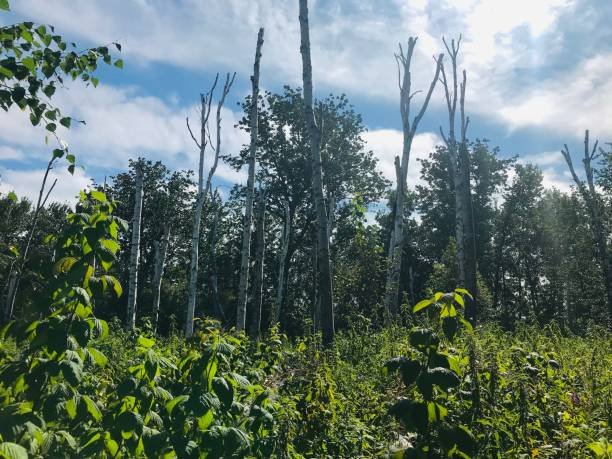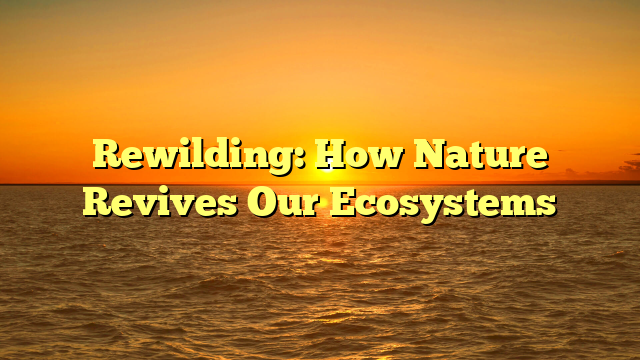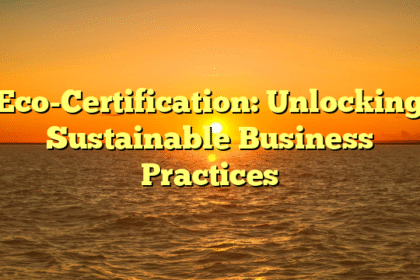Rewilding
In an age when local weather change looms giant and biodiversity is dwindling, there emerges a beacon of hope: rewilding. This modern strategy goals to rehabilitate ecosystems by reinstating pure processes and letting nature take the reins as soon as once more. With the ability to revive habitats, improve biodiversity, and mitigate the impacts of local weather change, rewilding isn’t solely a needed motion however a transformative one.
However what precisely does rewilding entail, and the way can it form our ecosystems for the higher? On this article, we delve deep into the idea of rewilding, its advantages, and actionable steps for people and communities.
What’s Rewilding?

Rewilding refers back to the strategy of restoring ecosystems to their pure state by reintroducing native species, eradicating human-made limitations, and permitting landscapes to thrive independently. Not like conventional conservation strategies that usually deal with species safety in isolation, rewilding embraces the interconnectivity of ecosystems. It promotes a holistic strategy, recognizing that each one residing issues—together with crops, animals, and people—are a part of a broader ecological tapestry.
The Targets of Rewilding
The first targets of rewilding will be summarized as follows:
-
- Enhancing Biodiversity: By reintroducing lacking species, ecosystems can regain steadiness and productiveness.
-
- Restoring Ecosystem Capabilities: Pure processes, akin to predation and pollination, are reinstated to create more healthy environments.
-
- Facilitating Pure Succession: By permitting landscapes to evolve with out human intervention, ecosystems can develop resilience to local weather change and different threats.
The Advantages of Rewilding
Rewilding affords a number of advantages, making it an interesting technique for conservationists, policymakers, and most people. Listed below are some key benefits:
1. Biodiversity Restoration
Research present that rewilded landscapes are inclined to help a higher variety of species in comparison with these which were closely managed or altered. By permitting ecosystems to perform naturally, we promote genetic variety and enhance resilience in opposition to pests, illnesses, and environmental stresses.
2. Local weather Change Mitigation
Pure ecosystems function carbon sinks, absorbing carbon dioxide from the ambiance. Rewilding can improve these carbon storage capabilities by restoring forests, wetlands, and grasslands, that are essential within the battle in opposition to local weather change.
3. Financial Advantages
Wholesome ecosystems can contribute to native economies by ecotourism, sustainable agriculture, and recreation. As biodiversity will increase, so do alternatives for native communities to thrive economically whereas preserving their environments.
4. Enhanced Ecosystem Companies
Ecosystem providers—advantages derived from nature, akin to clear water, pollination, and soil fertility—are enhanced by rewilding. Wholesome ecosystems can filter pollution, mitigate flooding, and guarantee meals safety.
5. Psychological and Bodily Nicely-being
Entry to pure environments is linked with improved psychological well being and bodily well-being. Rewilded areas create areas for recreation and rest, contributing to a greater high quality of life for close by communities.
Profitable Rewilding Initiatives Throughout the Globe
1. The Yellowstone to Yukon Initiative (Y2Y)
This bold mission spans over 3,800 miles, aiming to attach Yellowstone Nationwide Park within the U.S. to the Yukon in Canada. By restoring migratory pathways and habitats, Y2Y is enabling varied species, together with grizzly bears, to traverse freely.
2. European Rewilding Community
In Europe, initiatives just like the Rewilding Europe mission deal with areas such because the Iberian Peninsula and the Carpathians. These tasks emphasize reintroducing species like wolves and bison whereas selling eco-friendly tourism.
3. The Oostvaardersplassen Nature Reserve, Netherlands
A controversial but fascinating rewilding mission, the Oostvaardersplassen reserve permits for free-roaming giant herbivores akin to konik horses and pink deer. This space showcases the potential of restoring ecosystems with minimal human intervention.
Challenges and Criticisms of Rewilding
Whereas rewilding presents many benefits, it additionally comes with challenges. Some widespread criticisms embody:
1. Concern of Human-Wildlife Conflicts
Reintroducing species like wolves would possibly result in conflicts with farmers and native communities. Nevertheless, efficient administration and neighborhood engagement can mitigate these fears.
2. Moral Concerns
There are debates concerning the ethics of reintroducing species that will have been extinct for hundreds of years. Critics argue that human interference has altered habitats considerably, making them unsuitable for sure species.
3. Monetary Constraints
Funding for rewilding initiatives will be restricted, significantly in economically deprived areas. Sustainable financing fashions and neighborhood involvement are important for long-term success.
How You Can Contribute to Rewilding
Each particular person has a task to play within the rewilding motion. Listed below are actionable steps you’ll be able to take:
1. Assist Native Rewilding Initiatives
Get entangled or donate to native organizations centered on rewilding tasks. Your help may also help present the sources wanted for restoration.
2. Promote Native Species Planting
In your backyard or neighborhood areas, go for native crops that help native wildlife. This straightforward act contributes to biodiversity and enhances native ecosystems.
3. Have interaction in Group Consciousness Campaigns
Unfold the phrase about rewilding by social media, neighborhood workshops, or native occasions. Educating others can encourage collective motion towards environmental stewardship.
4. Apply Sustainable Dwelling
Adopting sustainable practices in each day life—lowering waste, conserving water, and sustaining a low carbon footprint—helps alleviate stress on pure ecosystems.
5. Advocate for Coverage Adjustments
Attain out to native representatives to help insurance policies that favor rewilding and ecosystem restoration. Participating in advocacy can create a broader impression on environmental laws.
Conclusion
Rewilding is greater than only a conservation technique; it’s a dedication to letting nature reclaim its rightful place on the earth. As we confront the urgent problems with biodiversity loss and local weather change, embracing rewilding can present efficient options that profit each ecosystems and humanity. By understanding its rules, acknowledging the challenges, and taking proactive steps, we every have the ability to take part on this transformative motion. Collectively, we are able to pave the best way for a future the place our ecosystems flourish, and nature thrives as soon as once more.
Incorporating rewilding into our lives isn’t merely a alternative; it’s an crucial. Be a part of the motion and watch as nature reveals its extraordinary capability for revival and regeneration. Allow us to all take accountability for this planet we name house—one rewilded step at a time.







